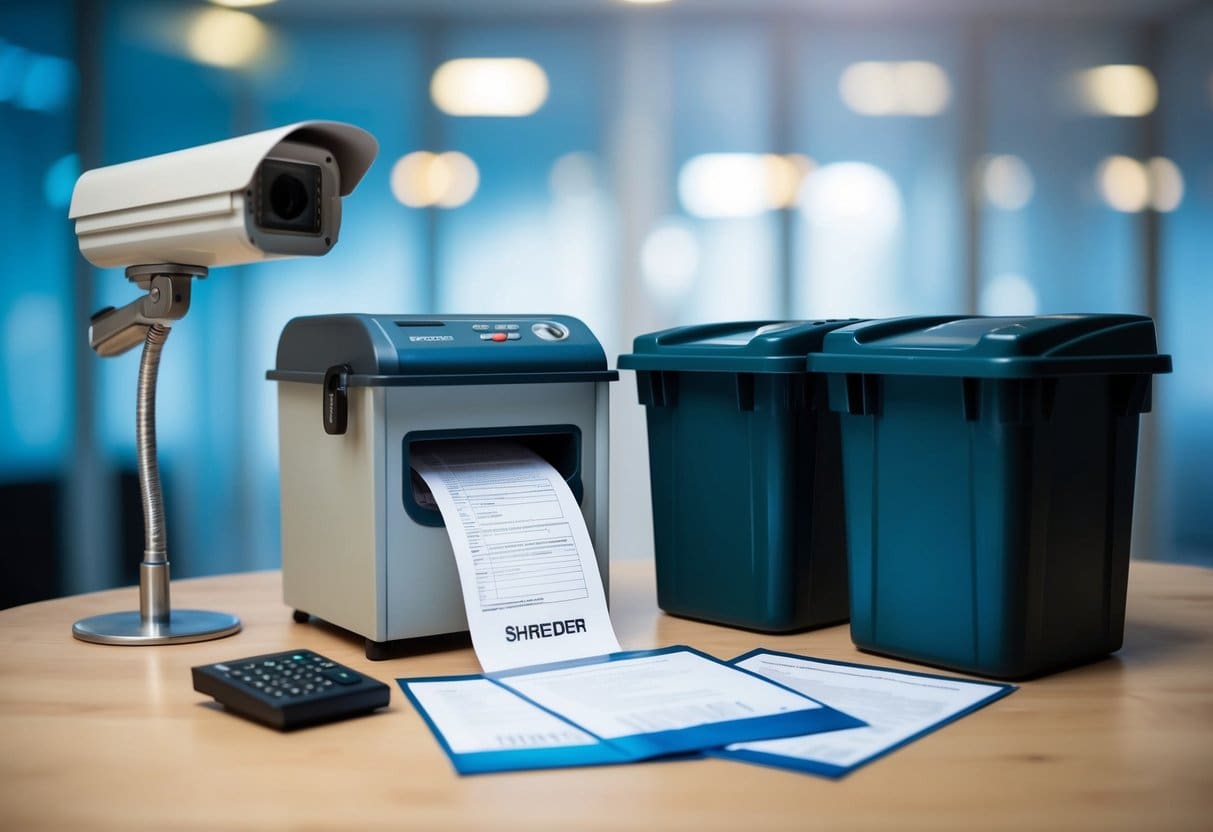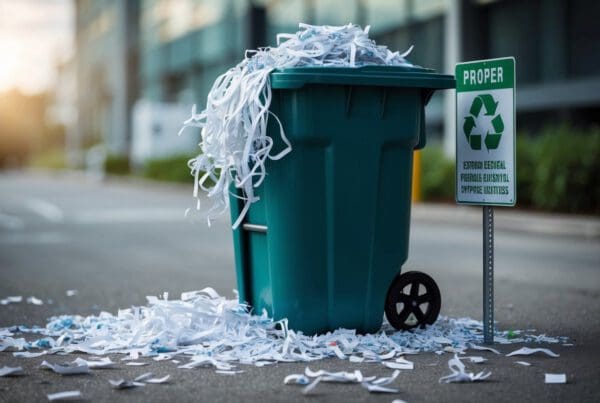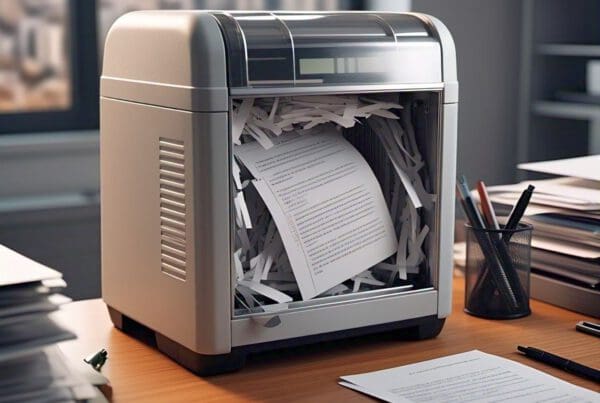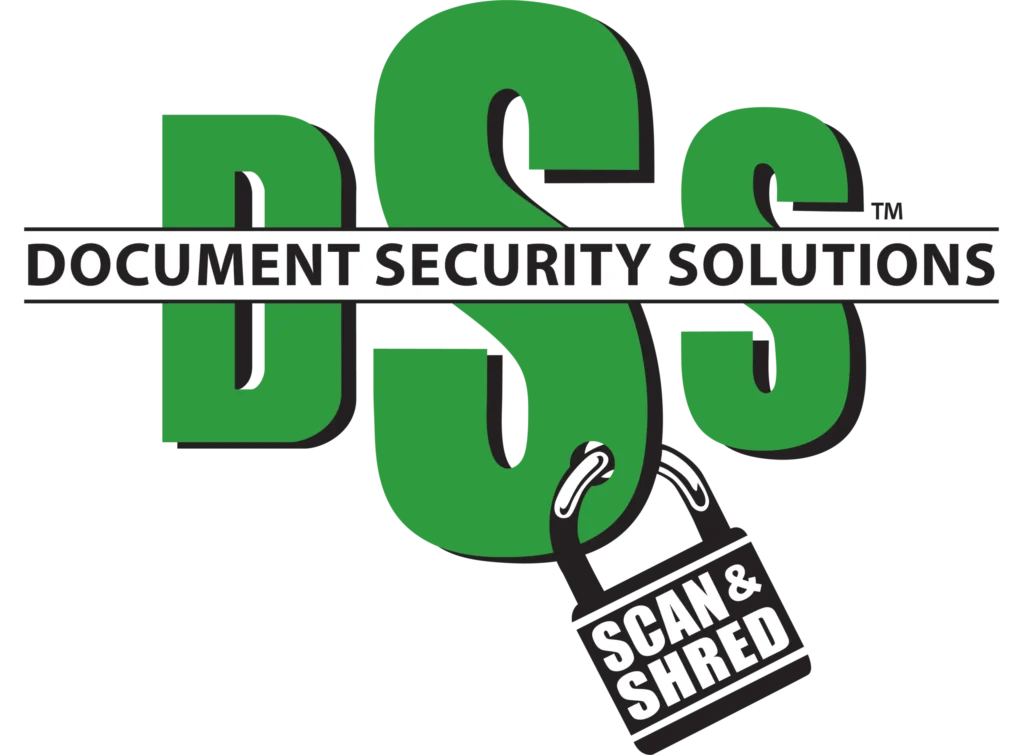Understanding Secure Document Destruction

Secure document destruction is essential for protecting sensitive information and complying with legal standards. Let’s look at how data security and privacy can be safeguarded and the laws that guide these destruction practices.
Importance of Data Security and Privacy
Data security is crucial in preventing identity theft and data breaches. Our team works diligently to protect sensitive information, ensuring data privacy is upheld. Data breaches can lead to significant financial and reputational damage, which makes secure document destruction non-negotiable. By properly destroying documents, we guard against unauthorized access to personal data.
Laws like the Health Insurance Portability and Accountability Act (HIPAA) and the General Data Protection Regulation (GDPR) require strict data protection measures. When information is safely destroyed, it helps us maintain trust and confidence with our clients and partners.
Legal Framework Governing Document Destruction
There are several legal requirements that we must follow when destroying documents. The Gramm-Leach-Bliley Act and the Fair and Accurate Credit Transactions Act are examples of laws that establish standards for safeguarding personal data. These regulations guide us in creating secure systems for destroying documents effectively.
HIPAA and GDPR are also important in regulating how sensitive information, especially health-related data, is handled. Compliance with these legal frameworks ensures we meet the necessary regulatory standards, reducing the risk of legal penalties and enhancing the overall security of our operations.
Risk Management and Compliance
In managing risks and ensuring compliance, it is crucial that we focus on both developing a strong data security strategy and strictly adhering to data protection laws. These components help us prevent compliance violations and bolster our document retention policies.
Developing a Data Security Strategy
Creating a data security strategy is essential for protecting sensitive information. We start by identifying and evaluating potential risks. This includes assessing our current security measures and reviewing their effectiveness. A comprehensive strategy also involves setting up document retention policies to ensure data is kept for the appropriate time frame and then securely disposed of.
Implementing a robust strategy requires ongoing monitoring and improvements. Regular training for our team on data security practices is vital. We should also obtain a certificate of destruction for any securely destroyed documents to provide proof that we are complying with our strategy.
Keeping our systems updated and employing advanced security technologies is another key aspect. These actions help mitigate risks, protect against potential threats, and maintain compliance with regulations.
Adhering to Data Protection Laws
Staying compliant with data protection laws is a central focus of our document management process. Regulations like the GDPR and CCPA have set standards for data handling and privacy. We must ensure our operations align with these laws to avoid compliance violations.
Regular audits are necessary to verify our compliance. This process helps us identify gaps and address them promptly. Our document retention policies must also reflect the legal requirements for holding and deleting data. Clear policies are necessary to demonstrate our accountability.
In addition, communication about policies with all stakeholders is crucial. Everyone involved must understand their roles in compliance to minimize risks associated with legal non-compliance.
Best Practices in Document Destruction

To protect sensitive information, document destruction is critical. We must focus on secure processes and reliable shredding services.
Implementing Secure Destruction Processes
We start by creating a document destruction policy that outlines how and when documents should be destroyed. This policy should cover all departments to ensure consistency.
Regular training sessions help everyone understand their role in protecting information. We should also ensure that only authorized staff access the documents.
Implementing a chain of custody is vital. It’s a detailed record of who handles the documents before destruction. Keeping this secure minimizes security risks and maintains accountability throughout the process.
Once documents are shredded, it’s essential to obtain a Certificate of Destruction. This document acts as proof that the materials were destroyed according to industry standards.
Selecting Professional Shredding Services
Choosing the right shredding service is key to secure document destruction. We look for providers with NAID AAA Certification. This certification ensures they meet the highest standards in the industry.
It’s crucial to evaluate the shredding options offered, whether on-site or off-site. On-site shredding allows us to witness the destruction, adding a layer of security.
We must ensure the service provides regular pickups to prevent document buildup. Professional shredding services often offer customized schedules to meet our specific needs.
Finally, review any complaints or reviews to assess the reliability and trustworthiness of the service. This helps ensure confidence in their ability to handle our documents securely.
Technological Solutions for Secure Destruction
Secure destruction of documents involves advanced technologies to prevent unauthorized access. These technologies are crucial for managing risks related to data breaches and sensitive information leaks.
Emerging Technologies in Data Destruction
New technologies are changing how we handle data destruction. Degaussing is a process that uses strong magnetic fields to erase data from hard drives and tapes. This ensures information is unrecoverable. Shredding is still used, but now we have more sophisticated methods that involve micro-cut shredders for increased security.
Software solutions can overwrite data multiple times, making it nearly impossible to recover. These methods focus on providing a strong defense against cyber threats. By using these technologies, we can maintain higher security standards and protect against unauthorized access.
Encryption and Access Controls
Encryption plays a vital role in data security. By converting data into a secure format, only those with the correct decryption key can access it. This adds a strong layer of protection during storage and transfer.
Implementing access controls allows us to manage who sees sensitive data. We can use security protocols to ensure only authorized personnel can reach certain levels of data. This prevents breaches from unwanted parties. Managing these controls effectively minimizes risks and strengthens our cybersecurity efforts.
Preventing Unauthorized Access and Security Breaches
Keeping sensitive data safe from unauthorized access is crucial. We employ strategies that focus on both educating our team and maintaining secure premises to protect against security breaches.
Employee Training and Security Protocols
Regular employee training is key to information security. We ensure all staff members understand the importance of managing sensitive data like financial information and intellectual property.
Training sessions focus on secure document management and disposal practices. Employees learn to spot potential threats such as corporate espionage and the mishandling of confidential documents.
Clear security protocols guide employees on how to handle data safely. For example, using secure passwords and recognizing phishing attempts can prevent breaches. These guidelines help us minimize risks and maintain the integrity of our document management system.
Physical Security Measures
Our physical security measures play an integral role in preventing unauthorized access. Restricted access areas are crucial; only authorized personnel can reach secured locations where sensitive documents are stored.
Surveillance systems and controlled entry points help prevent unauthorized entry. This is vital for protecting confidential documents and critical data.
Secure destruction methods ensure that documents no longer needed are disposed of correctly. Shredding and other secure disposal techniques prevent potential data leaks, safeguarding us against reputational damage.
Implementing these measures helps fortify our defenses against breaches that could compromise valuable information.





